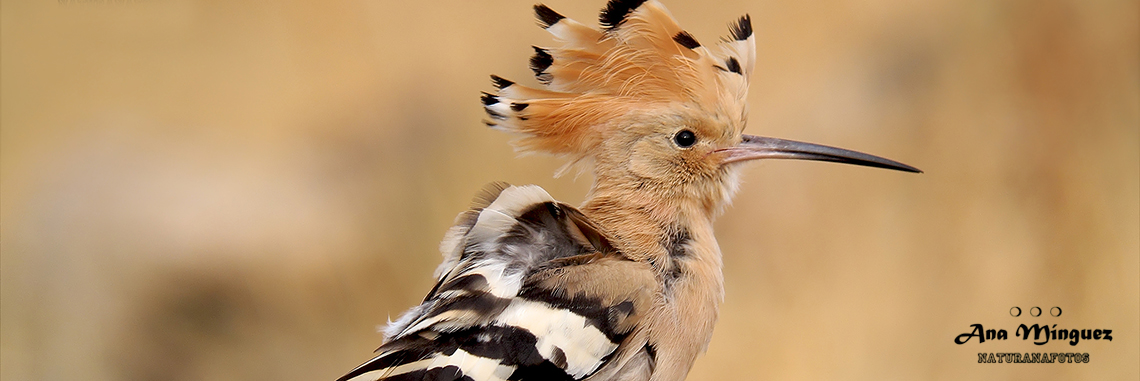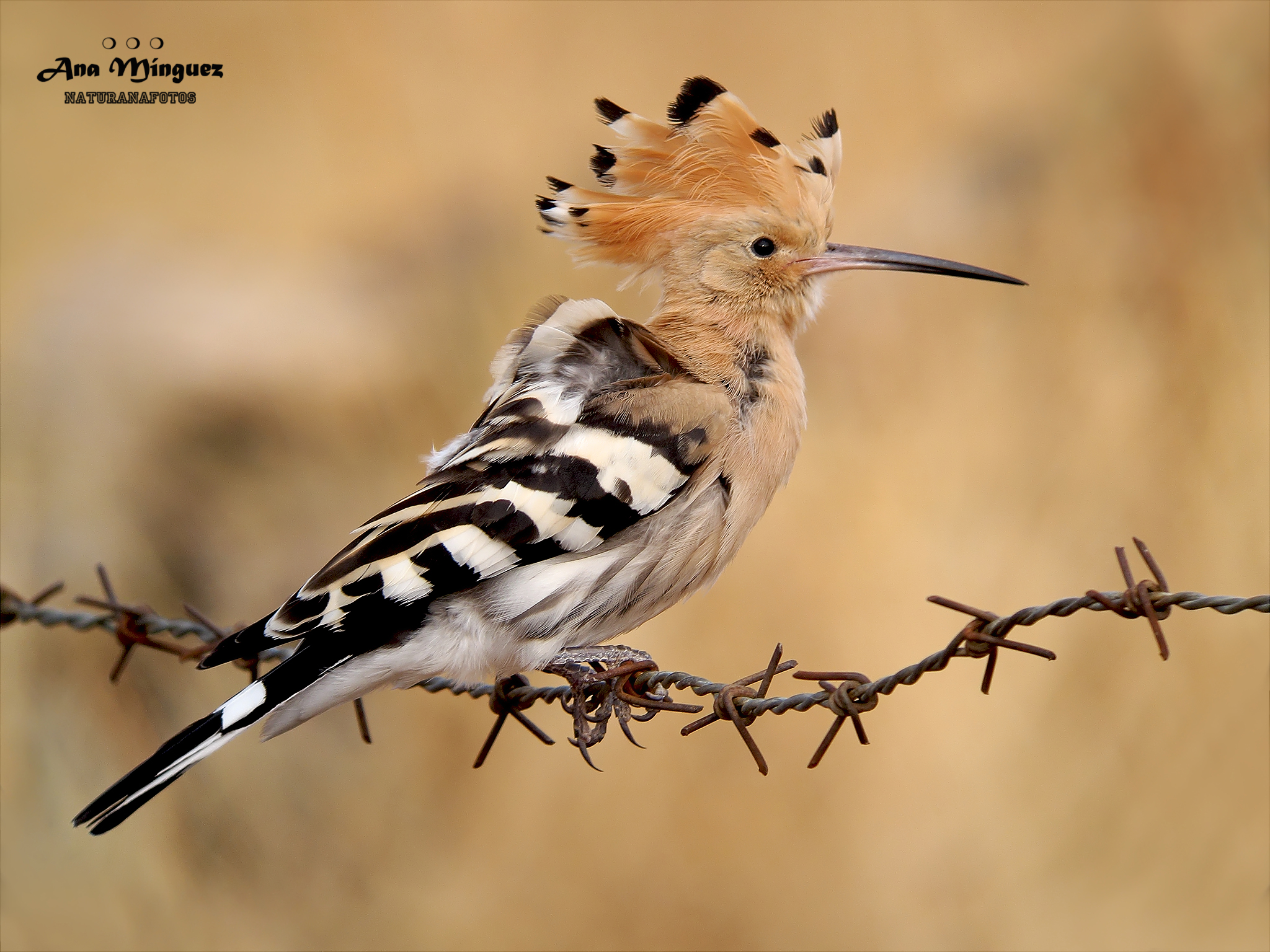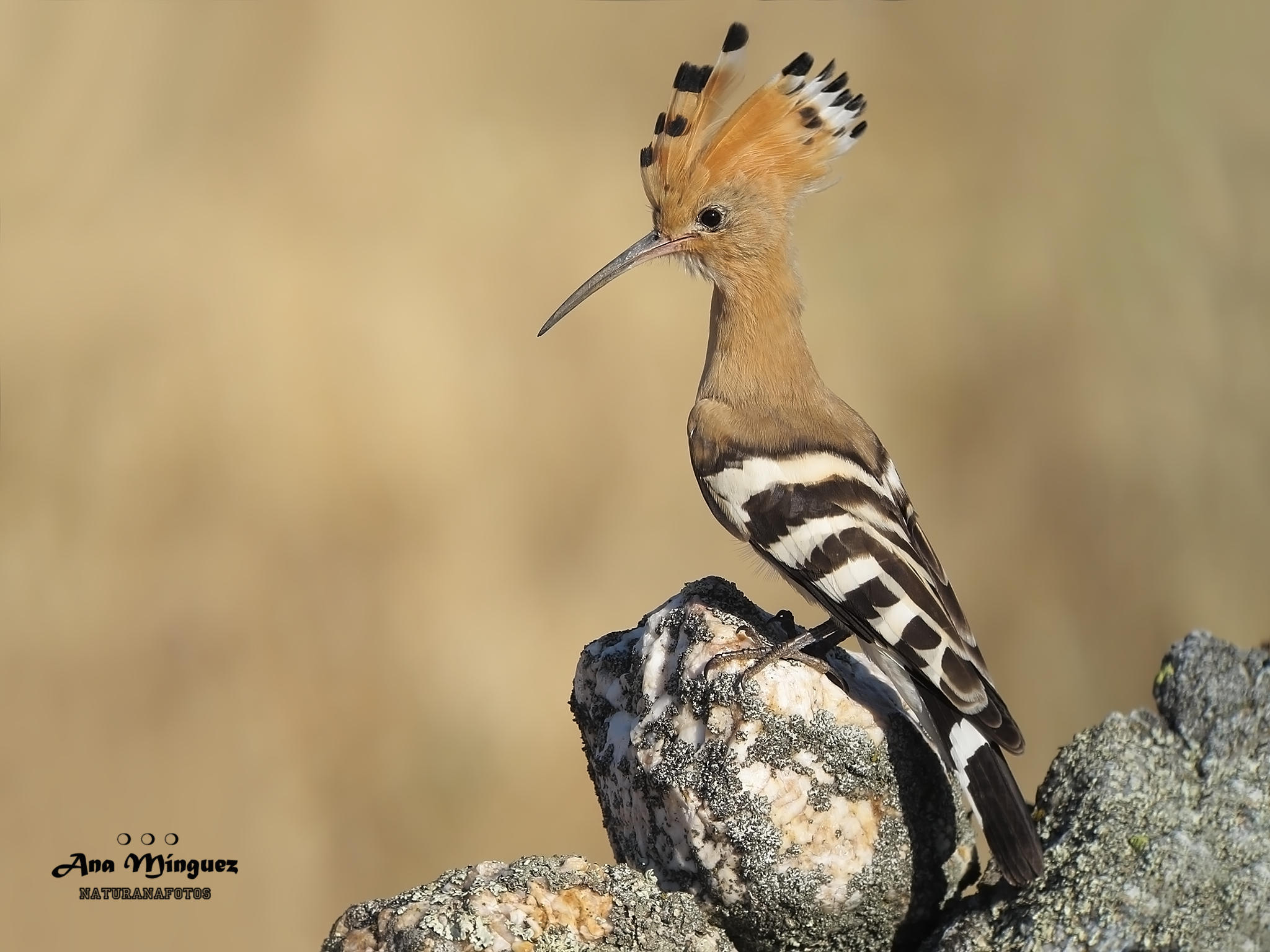The Hoopoe, the Vineyard's Most Elegant Bird

By Jose Luis Gallego, environmental communicator (@ecogallego)
A springtime stroll through the fields, especially in the vicinity of vineyards, gives us the chance of observing one of the most beautiful birds of the Iberian fauna: the hoopoe, which ornithologists call by its scientific name: Upupa epops. The name, as we’ll see later, is directly related to the notes of its peculiar song.
When perched, they appear compact, with an elongated body about 27 centimetres in height. They have a wingspan of 48 centimetres and weigh around 60 grams. In other words, a medium-sized bird, with an unmistakable silhouette that culminates in a large retractable crest, which the hoopoe usually keeps gathered in the back, as though it were a long tail. This pointy bun, however, fans out into a spectacular crown of orange-tinged feathers, beautifully tipped in black, which the bird displays ostentatiously when excited or on alert.
In these moments, with its impressive crown of tall feathers rising up from its head, the hoopoe resembles a bird of paradise, an exotic creature that no one would associate with our vineyards, olive groves, and meadowlands, and yet these are its native habitat.

A hoopoe, photo by: Ana Mínguez
The back feathers are pinkish brown from neck to shoulders, where they suddenly dip down into an elegant coat of strikingly contrasted, striped black-and-white feathers. This coat extends all the way to the tail, which is also black with one final broad white stripe.
Along with this distinctively patterned body, similar to a zebra, the hoopoe sports an elongated neck and an extraordinary bill, one of the most peculiar among Mediterranean field birds: very long, down-curved and black, tapering to a sharp point.
Another distinctive trait that makes the hoopoe so unmistakable is its flight pattern: very low to the ground, slow and deliberate. It flies almost absent-mindedly, like a small kite dancing on the wind, every so often flapping its wings. And with each flap, the hoopoe reveals the splendour of its elegantly patterned plumage: black-and-white stripes, culminating in that white-banded tail, a true signature flourish. During the mating season, hoopoes will fly surprising somersaults in pairs.
And as though this didn’t make them sufficiently fascinating, hoopoes also have a distinctive call (Upu-put, pu-pu-put), making them immediately identifiable, even at a distance. Hearing this sound, this peculiar song, is precisely what inspired the naturalist Linnaeus to give the species its Latin name (Upupa).

A hoopoe, photo by: Ana Mínguez
More and more hoopoes choose to stay in our fields year round, except along the Cantabrian coast where they are rare, but they are traditionally summer birds that migrate to their wintering grounds in Subsaharan Africa at the end of the season.
The hoopoe is a characteristic species of the Mediterranean woodland, commonly found in coastal holm oak and pine forests surrounded by farmland, where the bird digs into the soil with its long curved bill in search of small invertebrates. Tree hollows and rock crevices are among its favourite nesting spots.
A clutch usually consists of over half a dozen eggs, which the female incubates on her own for two to three weeks. Once they hatch, the female is also responsible for collecting whatever the male has caught, essentially worms and larvae, and feed the chicks.
One final curious fact about this surprising and unusual species relates to its smell. There’s a popular Spanish saying: huele peor que un nido de abubillas, which translates as “it smells worse here than a hoopoe’s nest”. It’s a reference to the fetid smell that emanates from their nests, because the parents are in the habit of collecting their excrements at the entrance to the nesting hole so that the foul odour will scare off predators.
In addition, females secrete an oily substance with a very unpleasant smell, which they use as an unusual “perfume” in the hopes that this will make them a rather “unappetizing” morsel for any lurking predator.
